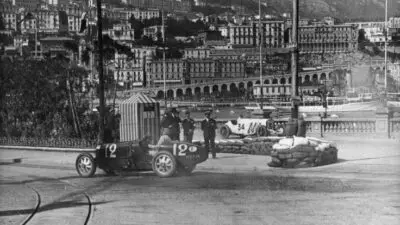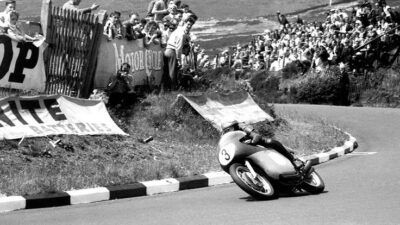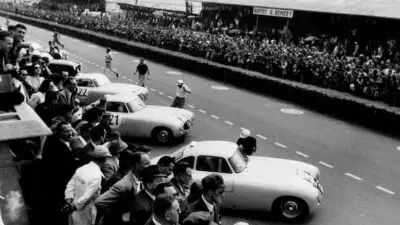Fernando Alonso’s return to Formula 1 has become one of racing’s most compelling stories. After walking away from the sport in 2017, the two-time world champion made a surprising comeback that few expected to be so successful. At age 43, Alonso has defied expectations since joining Aston Martin in 2023, securing multiple podium finishes and demonstrating that his competitive edge remains as sharp as ever.

What drives a champion to return to the grueling world of F1 after already achieving legendary status? For Alonso, the comeback wasn’t just about reliving past glories. When he left F1, he felt his exit happened “on a low,” with people not recognizing his true abilities despite his performance remaining at a high level. His return has been about proving he’s “still fast, at whatever age” and adding another remarkable chapter to his racing legacy.
The Spanish driver’s Formula 1 comeback journey has featured tremendous racecraft and plenty of daring overtakes, reminding fans why he became a double world champion. With a multi-year contract extension at Aston Martin, Alonso continues to compete with drivers half his age while maintaining his characteristic determination and skill that have defined his career.
Fernando Alonso’s Racing Roots and Early Career

Fernando Alonso’s journey to Formula 1 stardom began in his childhood with a passion for racing that was evident from his earliest years. His natural talent and determination shaped his path from karting championships to his first Formula 1 opportunity.
Karting Beginnings
Fernando Alonso’s racing career started remarkably early when he began karting at just three years old, inspired by his father who was an amateur kart racer. This early introduction to motorsport quickly revealed Alonso’s natural talent behind the wheel.
By his teenage years, Alonso had established himself as a dominant force in Spanish karting. He collected multiple championships and trophies, showing exceptional skill in wet conditions and remarkable consistency in races.
His karting achievements included:
- Four consecutive Spanish Junior National Championships (1993-1996)
- The Junior World Cup in 1996
- Second place in the European Championship
These early successes caught the attention of racing scouts and paved the way for his transition to single-seater racing at age 17, when he won the Euro Open by Nissan championship with five victories.
Minardi Debut and Initial Impact
Alonso’s Formula 1 journey officially began in 2001 when he made his debut with Minardi, a team with limited resources but one that offered the young Spaniard his first opportunity in the pinnacle of motorsport. Despite driving one of the grid’s least competitive cars, Alonso’s talent was immediately apparent.
His qualifying performances often outpaced the car’s capabilities, and he consistently outperformed his more experienced teammates. Alonso’s mature driving style and technical feedback impressed team principals across the paddock.
Though points were out of reach in the underperforming Minardi, his standout moment came at the Japanese Grand Prix where he finished 11th. This performance, along with his season-long displays of raw talent, earned him a test driver role with Renault for 2002, setting the stage for his future success.
Becoming a Champion: The Renault Years

Fernando Alonso’s rise to Formula 1 glory came during his stint with Renault, where he made history by becoming the youngest-ever world champion at just 24 years old. His back-to-back titles in 2005 and 2006 marked the end of the dominant Schumacher era.
Breakthrough Performances
After impressing in his debut season with Minardi in 2001, Alonso was integrated into Renault as a test driver. This strategic move prepared him for his return as a full-time driver in 2003.
Alonso’s first major breakthrough came at the 2003 Hungarian Grand Prix, where he became the youngest driver to win a Formula 1 race. This victory wasn’t a fluke – it demonstrated his exceptional car control and race management skills.
The 2005 season proved to be his defining moment. Alonso showed remarkable consistency, securing seven race victories and fifteen podium finishes. His driving style combined aggression with precision, making him a formidable competitor on any track.
Defeating Michael Schumacher
Alonso’s greatest achievement was ending the reign of the Michael Schumacher-Ferrari combination that had dominated Formula 1 for years. The 2005 championship battle showcased his mental strength and tactical intelligence.
The Spaniard’s defensive driving at Imola in 2005 remains legendary. For over 10 laps, he kept a charging Schumacher behind despite the Ferrari’s speed advantage. This display highlighted his ability to perform under immense pressure.
In 2006, Alonso faced a resurgent Schumacher in a more direct battle. The championship swung back and forth, but Alonso’s consistency prevailed. His victory at the Japanese Grand Prix effectively sealed his second world title.
Key victories against Schumacher:
- 2005 San Marino Grand Prix (defensive masterclass)
- 2006 Malaysian Grand Prix (dominant performance)
- 2006 Japanese Grand Prix (championship-deciding race)
Team Dynamics and Flavio Briatore
Team principal Flavio Briatore played a crucial role in Alonso’s success. The Italian manager recognized Alonso’s talent early, personally championing his development within the Renault system.
Briatore created an environment where Alonso was the clear number one driver. This strategy allowed the team to focus resources and development around Alonso’s driving style, maximizing his performance potential.
The technical partnership between Alonso and engineering director Pat Symonds was equally important. Together with engine specialist Rob White, they formed a formidable team that understood how to extract maximum performance from the Renault R25 and R26 cars.
By September 25, 2005, Alonso had secured his first world championship, signaling a new era in Formula 1. His success with Renault demonstrated that with the right team structure and leadership, even smaller teams could overcome the sport’s giants.
Battling at the Top: McLaren, Ferrari, and Rivalries

Fernando Alonso’s career has been defined by intense competition with top teams and drivers. His time at McLaren and Ferrari placed him at the center of Formula 1’s most heated rivalries.
Challenges at McLaren with Lewis Hamilton
Alonso joined McLaren in 2007 as a two-time world champion, expecting team leadership. Instead, he found himself alongside rookie Lewis Hamilton who immediately showed exceptional speed and talent.
The teammate rivalry between Alonso and Hamilton became one of F1’s most intense. Despite both driving the same machinery, neither could establish clear dominance. Their competition led to growing tension within the team.
The relationship deteriorated during the Hungarian Grand Prix qualifying when Alonso blocked Hamilton in the pits. This incident heightened existing friction.
The Spygate scandal involving McLaren and Ferrari further strained Alonso’s position. McLaren was fined $100 million for possessing Ferrari technical documents.
By season’s end, both drivers finished with 109 points, missing the championship by one point to Kimi Räikkönen. Alonso left McLaren after just one season, returning to Renault.
Pushing Ferrari to the Limit
Alonso joined Ferrari in 2010, beginning a new chapter in the legendary rivalry between Ferrari and McLaren. His arrival renewed hope for the Italian team seeking its first drivers’ title since 2007.
In his debut Ferrari season, Alonso led the championship into the final race in Abu Dhabi. A strategic error cost him the title, with Sebastian Vettel claiming his first championship.
The 2012 season showcased Alonso’s talent, as he fought for the championship in a less competitive Ferrari. He led the standings for much of the season despite Red Bull’s superior car.
His determination nearly delivered Ferrari a championship against the odds. Alonso lost the title by just three points to Vettel in Brazil’s season finale.
Ferrari’s inability to provide a championship-winning car eventually led to frustration. Despite 11 wins and 44 podiums with the team, Alonso never secured a third world title with Ferrari.
Clashes with Sebastian Vettel and Red Bull
Alonso’s rivalry with Sebastian Vettel defined his Ferrari years. Red Bull’s dominance challenged Ferrari’s status as F1’s premier team.
Their on-track battles were fierce and sometimes controversial. At the 2012 Italian Grand Prix, Alonso called Vettel “very lucky” after a near-collision, while Vettel labeled some of Alonso’s defensive moves “dangerous.”
The 2010 and 2012 championship fights were particularly intense. Both seasons saw Alonso leading the standings heading toward the final races, only for Vettel to emerge victorious.
Alonso often implied that Vettel’s success came primarily from Red Bull’s technical superiority. This added psychological dimension to their rivalry.
By 2013, Red Bull’s dominance was complete, with Vettel winning nine consecutive races. This supremacy contributed to Alonso’s growing disillusionment at Ferrari.
Their rivalry continued to simmer even after Alonso left Ferrari, with occasional on-track incidents reminding fans of their competitive history.
Retirement from Formula 1 and Motorsport Adventures

Fernando Alonso’s career took a significant turn when he stepped away from Formula 1 in 2018. His departure opened doors to diverse racing challenges and eventual return to the pinnacle of motorsport with renewed purpose.
Leaving F1 and International Success
Fernando Alonso left Formula 1 at the end of the 2018 season after 17 years in the sport. His departure came after struggling with uncompetitive McLaren machinery that failed to match his championship-winning talent.
During his time away from F1, Alonso pursued an impressive variety of motorsport challenges. He competed in the Indianapolis 500, aiming to achieve the prestigious Triple Crown of Motorsport.
Alonso found significant success in endurance racing, winning the 24 Hours of Le Mans twice with Toyota in 2018 and 2019. He also claimed the World Endurance Championship title, demonstrating his versatility beyond F1.
The Spanish driver even tackled the grueling Dakar Rally in 2020, showing his willingness to step completely outside his comfort zone and compete in rally raid events.
Return Motivations and Perspective
Alonso’s return to Formula 1 with Alpine (formerly Renault) in 2021 was driven by his undiminished passion for the sport. Despite being in his 40s, he has maintained exceptional fitness and competitive drive.
His switch to Aston Martin in 2023 brought renewed success, including his 100th podium finish at the Saudi Arabian Grand Prix. The team’s ambitious project aligned with Alonso’s desire to compete at the front of the grid.
Alonso has indicated that the 2026 F1 car regulations will play a crucial role in determining his future in the sport. As the oldest driver on the grid, he maintains that enjoying the competition remains his primary motivation.
His experience during his time away from F1 has given him a broader perspective on motorsport and life, making his current F1 stint more about passion than pressure.
The Comeback: Alpine and the Path Back to Form

Fernando Alonso’s return to Formula 1 in 2021 marked the beginning of a new chapter in his storied career. His comeback with Alpine represented both a nostalgic return to his championship-winning roots and a fresh challenge in a rapidly evolving sport.
Reuniting with Alpine (formerly Renault)
Alonso rejoined the Formula 1 grid with Alpine, the rebranded Renault team where he had previously claimed his two world championships. This reunion felt like a homecoming for the Spanish driver, creating a narrative of potential redemption with new regulations on the horizon.
The decision to return wasn’t made lightly. Alonso had walked away from the sport in 2017 and initially wasn’t planning a comeback. However, the prospect of the 2022 regulation changes and Alpine’s development trajectory convinced him to sign.
For Alonso, the return wasn’t merely about reliving past glory. It represented a deeper motivation to continue challenging himself at the highest level of motorsport.
Teaming Up with Esteban Ocon
Alonso formed a dynamic partnership with young French driver Esteban Ocon at Alpine. This pairing created an interesting mix of youth and experience within the team.
Their relationship progressed from initial professional respect to genuine teamwork throughout their time together. Both drivers pushed each other to extract maximum performance from the Alpine machinery.
A highlight of their partnership came at the 2021 Hungarian Grand Prix, where Ocon secured his maiden F1 victory. Alonso played a crucial supporting role, defending vigorously against Lewis Hamilton to protect his teammate’s lead.
The Alonso-Ocon duo provided Alpine with a balanced driver lineup that combined Alonso’s technical feedback and race craft with Ocon’s developing talent and determination.
Key Comeback Moments
Alonso’s return featured several standout performances that showcased his enduring skills:
- 2021 Azerbaijan Grand Prix: Finished 6th in a chaotic race, demonstrating his ability to capitalize on opportunities
- 2021 Hungarian Grand Prix: His defensive masterclass against Hamilton helped secure Ocon’s victory
- 2022 Canadian Grand Prix: Qualified on the front row in wet conditions, proving he hadn’t lost his touch in challenging weather
His racecraft remained exceptional throughout his Alpine tenure. Alonso frequently made impressive first laps, gaining multiple positions with aggressive yet calculated moves.
Despite these highlights, Alonso’s time at Alpine was often characterized by frustration with reliability issues. The team struggled to deliver consistent results, which ultimately influenced his decision to seek new opportunities for 2023.
Aston Martin Era and a New Resurgence

Fernando Alonso’s move to Aston Martin marked a stunning new chapter in his storied Formula 1 career. What many initially viewed as a step backward proved to be the platform for one of F1’s most inspiring comebacks.
Swift Move After Alpine Exit
Fernando Alonso shocked the Formula 1 world when he announced his departure from Alpine to join Aston Martin for the 2023 season. The decision came after growing tensions at Alpine and uncertainty about their future development path. Many critics questioned his choice, viewing Aston Martin as a midfield team with limited potential.
The timing of Alonso’s move proved remarkably prescient. He signed with Aston Martin after Alpine showed reluctance to offer him a longer contract despite his strong performances. At 41 years old, the Spanish driver demonstrated his unwavering belief in his abilities.
Aston Martin, under Lawrence Stroll’s ownership, had been investing heavily in infrastructure and talent acquisition. This ambitious project aligned perfectly with Alonso’s competitive nature and desire to compete at the front once again.
Immediate Podiums and Revival
Alonso’s impact at Aston Martin was immediate and dramatic. In the 2023 season opener in Bahrain, he secured a podium finish, stunning the F1 paddock. This remarkable result was no fluke, as he went on to claim multiple podiums in the first half of the season.
The Spanish champion reignited his passion for racing with these performances, showing speed and race craft that belied his veteran status. His technical feedback proved invaluable to the team’s development process, helping elevate their car performance beyond expectations.
By mid-2023, Aston Martin had transformed from a backmarker to a regular podium contender. Alonso’s ability to extract maximum performance from the car and his strategic brilliance during races reminded everyone why he’s considered one of F1’s all-time greats.
Partnership with Team and Future Ambitions
Alonso’s relationship with Aston Martin has evolved into a true partnership, with both sides committed to long-term success. His contract runs through 2026, demonstrating mutual faith in their shared vision. The Spanish driver has repeatedly emphasized that this project represents his last chance at championship glory.
The arrival of legendary designer Adrian Newey has further energized the team. Alonso is spearheading this transformation campaign, working closely with Newey to develop a car capable of challenging for championships. This technical partnership could prove crucial for their 2025 ambitions.
Despite some difficulties in recent races, Alonso remains optimistic about Aston Martin’s trajectory. He has laid down a marker for the team’s resurgence in 2025, emphasizing the lessons learned from previous setbacks. His leadership has created a winning mentality throughout the organization.
Comeback Analysis: Legacy, Performance, and Lasting Impact

Fernando Alonso’s return to Formula 1 has rewritten expectations for veteran drivers and transformed his own racing legacy. His technical expertise and determination have created a blueprint for successful comebacks in the sport.
Championship Hopes and Challenges
Alonso’s return to F1 wasn’t merely about nostalgia – it was fueled by genuine competitive ambition. Since rejoining the grid in 2021, he has demonstrated remarkable consistency and race craft, particularly with Aston Martin’s unexpected rise to second place in the constructors’ standings.
His quest for a 33rd Grand Prix victory remains a significant milestone. “Winning the 33rd Grand Prix or fighting for a championship would add even more drama to the comeback story,” Alonso has stated.
The two-time world champion faces stiff competition from dominant teams like Red Bull and Mercedes. Despite this, his ability to extract maximum performance from his machinery has kept him relevant in conversations about podium contenders.
Influence Among Peers and on the Grid
Alonso’s technical feedback has proven invaluable to team development, showing why experience matters in F1. His detailed understanding of car performance has accelerated Aston Martin’s development timeline beyond expectations.
Lewis Hamilton and other drivers have expressed respect for Alonso’s racing intelligence and adaptability. His defensive driving techniques are studied by younger competitors, creating a lasting technical legacy.
“When we signed him at the start of August last year, Fernando didn’t know the car would be this fast,” team owner Lawrence Stroll noted, highlighting Alonso’s catalytic effect on team performance.
The Spaniard’s comeback has inspired other veteran drivers to reconsider retirement timelines, reshaping how teams value experience alongside youth in their driver lineups.
Perseverance in a New F1 Landscape
Alonso’s determination to prove his continued relevance defines his comeback. “When I finished, it was on a low, and I didn’t want that because my performance, my competitiveness, was as high as ever,” Alonso explained, addressing his motivation to return.
His adaptability to new technical regulations has been remarkable. Despite F1’s dramatic rule changes since his earlier career, Alonso has quickly mastered the new generation of cars, challenging competitors half his age.
Alonso’s comeback draws comparisons to other F1 legends who overcame odds, but his sustained performance level stands apart. Unlike some returning champions, he’s remained competitive rather than simply participating.
His resilience through challenging races demonstrates why his racing legacy continues to grow even in the twilight of his career.



